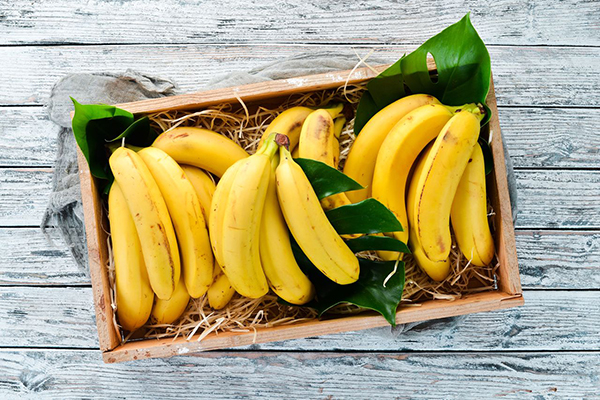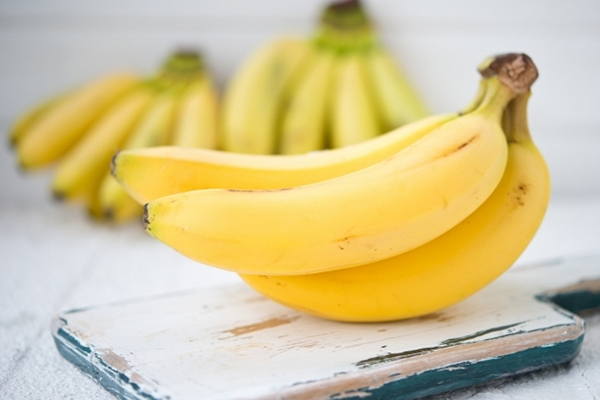Do bananas really help you grow taller? Honestly, I’ve heard this one tossed around since middle school lunch tables—and it still comes up in parent forums and gym locker rooms. You’ve probably wondered the same thing, especially if you’ve got a growing kid at home, or you’re in your late teens hoping to squeeze out a few more inches (I’ve been there, trust me). Now, bananas do come loaded with potassium and tryptophan—two names that sound like they belong in a biology textbook, but they actually play interesting roles in metabolism and bone health. Still, can eating them really impact your height?
Let’s break it down with some actual science and real-world context…
Alright, let’s talk bananas—not just the grab-and-go snack, but the nutritional workhorse most of us completely underestimate. You’ve probably tossed one in your gym bag or handed one to your kid before school, but have you ever really thought about what’s in that peel?
Each medium banana (according to the USDA—yes, I double-checked) packs about 105 calories, mostly from natural sugars and about 3 grams of fiber. That combo gives you quick energy without the crash, which is why bananas are one of the few fruits athletes swear by mid-race. Potassium? It’s no joke—you’re looking at roughly 422 mg per banana, which helps regulate energy metabolism and fluid balance, especially if you’re active or still growing.
What I’ve found most surprising, though, is how underrated vitamin B6 is here. One banana gives you about 25% of your daily needs—huge for supporting brain development and processing protein (which matters a lot more for growth than people think). And don’t even get me started on the magnesium and trace antioxidants—small players, but they quietly support bone density and digestion.
So, next time you’re reaching for a snack, remember: a banana isn’t just “healthy.” It’s strategically loaded for growth and energy support—especially when you’re still developing or training hard.

Let’s get real—I’ve been asked this way more times than I expected when I first got into height optimization. And honestly? I get it. Bananas are cheap, tasty, and everywhere. But do they actually help you grow taller? Short answer: not directly, but they definitely support the systems that do.
Here’s what I mean. Bananas aren’t going to spike your growth hormone like magic, but they do play a supporting role. They help regulate insulin levels, and when insulin is stable, your body’s IGF-1 production—that’s insulin-like growth factor, a key growth stimulator—tends to work better. That matters a lot during childhood and puberty, when hormone balance is everything.
Also, bananas are considered alkaline-forming, which may help with calcium retention in bones. (And if you’re building bone density or repairing muscle after workouts—especially teen athletes—you want that.) In my experience, they’re also a smart part of a post-training snack because of their role in protein synthesis and muscle recovery.
So no, bananas aren’t height boosters on their own—but if you’re eating for growth, they absolutely belong in your toolkit. I keep them in mine

Okay—so if you’re trying to maximize your height potential (or your kid’s), when you eat matters almost as much as what you eat. And bananas? They’re surprisingly timing-sensitive when it comes to growth support.
What I’ve found over the years is that morning and post-workout are the two best windows. In the morning, your insulin sensitivity is higher, which means your body handles natural sugars better. Pair a banana with protein-rich oats or a glass of milk, and you’ve got a blood sugar-stabilizing combo that supports energy, nutrient absorption, and even IGF-1 activity—that’s a growth hormone your body needs during key growth phases.
Now, here’s where it gets interesting: eating a banana in the evening, especially with warm milk, might help promote serotonin and melatonin production, which can support better sleep. And as you probably know, growth hormone spikes while you sleep. So if you’re someone who struggles with late-night hunger or poor sleep quality (I’ve been there), a banana before bed isn’t just harmless—it’s strategic.
So, morning for metabolism, evening for hormone rhythm. Personally? I rotate both—depends on the day’s workout and how I’m sleeping. Try it and see what your body responds to.
You ever stand in the kitchen, banana in hand, wondering “Is this really helping me grow taller?” I’ve had that moment—especially back when I was obsessively tweaking my own diet for every inch I could get. Now, bananas are great, but when you line them up next to other growth-supporting foods, things get interesting.
Here’s what I’ve found from experience (and a lot of nutrition label reading):
So, are bananas the MVP? Not quite. But in a well-rounded, growth-focused diet, they’re like the support player who never misses a pass. Keep them in the rotation—they make the rest of your nutrition strategy work better.
You ever scroll TikTok and see someone claiming bananas “unlock growth hormone” or make you taller if you eat three before bed? Yeah… same. And let me be real—I used to fall for this stuff back in the day, too. The problem? Most of it’s straight-up pseudoscience, dressed in gym clothes and flashy edits.
I pulled together a little table to clear the air—because the comparison helps, especially if you’re trying to separate fact from fluff:
| Claim | Social Media Says | What the Science Shows |
|---|---|---|
| Bananas boost height directly | “Eat one daily to grow taller overnight!” | Bananas support metabolism, but don’t trigger growth on their own. No magic. |
| Banana + milk = HGH surge | “Combo hacks your height genes!” | Milk helps with calcium and protein, sure. Bananas add energy. That’s it. |
| Bananas raise IGF-1 significantly | “They’re anabolic af, bro.” | Only slightly—via insulin regulation. It’s not a hormone switch. Don’t get hyped. |
What I’ve found is this: bananas are supportive, but they’re not height pills in fruit form. Keep them in your diet, absolutely. Just don’t fall for TikTok science that’s been rebranded as “growth hacks.” Stick to evidence-based habits—and always, always check your sources.
Related post: